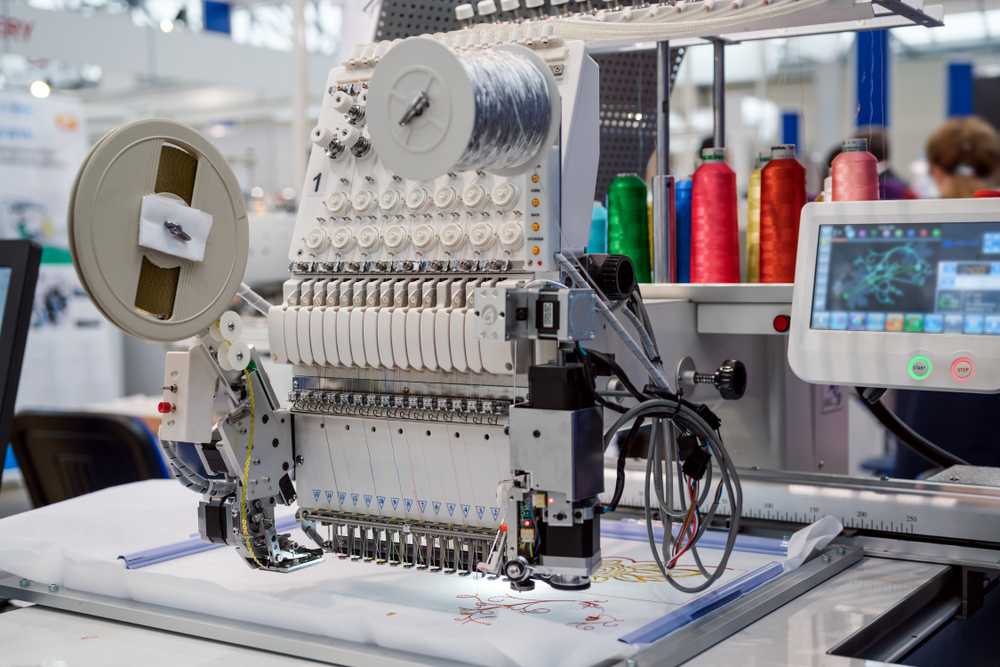High-grade Digitizing for Embroidery: Specialist Workmanship
High-grade Digitizing for Embroidery: Specialist Workmanship
Blog Article
Simplifying the Art of Embroidery Digitizing: Step-by-Step Guide
Needlework digitizing is a precise craft that requires precision and imagination. As innovation remains to advancement, the digitization procedure has come to be extra obtainable, enabling enthusiasts to bring their intricate layouts to life effortlessly. In this overview, we will certainly decipher the intricacies of embroidery digitizing, damaging down each action methodically to streamline the procedure and equip both beginners and skilled embroiderers alike. Keep tuned to discover just how you can simplify this intricate art kind and transform your innovative visions into beautifully stitched masterpieces.
Understanding Needlework Digitizing Software
Needlework digitizing software offers as an essential device for transforming intricate designs right into digital layouts compatible with embroidery devices, assisting in accurate sewing and customization. This customized software enables customers to import various picture documents formats, such as JPG or PNG, and transform them into needlework machine-readable formats like DST, EXP, or PES - Digitizing for Embroidery. By using attributes like stitch editing, underlay choices, and string shade choice, digitizing software program enables individuals to regulate every facet of the design process
Moreover, advanced needlework digitizing software program provides devices for developing intricate styles, changing stitch density, and integrating detailed information. Individuals can likewise preview the style before stitching it out, guaranteeing precision and minimizing errors. Additionally, numerous software application programs supply automatic features that help improve the digitizing procedure, conserving time and initiative.
Comprehending the abilities of embroidery digitizing software application is crucial for attaining high-grade lead to needlework tasks. By understanding this tool, embroidery enthusiasts and specialists can release their imagination and bring complex styles to life with accuracy and effectiveness.

Picking the Right Design File
After acquainting on your own with the abilities of embroidery digitizing software program, the next vital action in the process is picking the appropriate style declare your project. Digitizing for Embroidery. When selecting a layout declare needlework digitizing, it's important to take into consideration the intricacy of the style, the size of the end product, and the kind of material you will be collaborating with
For intricate styles with fine details, a high-resolution photo or vector data is suggested to make sure that the embroidery equipment can precisely recreate the design. In addition, the size of the last item plays a considerable role in picking the ideal design documents. Larger designs might call for greater resolution files to keep clearness and sharpness.
Furthermore, the kind of fabric you will certainly be embroidering on affects the selection of design data. Various fabrics might call for adjustments in the design data to ensure that the stitches are correctly straightened and the design appears as meant. By thoroughly picking the right layout documents based upon these elements, you can establish on your own up for an effective needlework digitizing process.
Digitizing Devices and Techniques
Utilizing specialized software application and accuracy strategies, digitizing devices are necessary in changing intricate designs into embroidery-ready data. Needlework digitizing software application, such as Wilcom, Hatch, or Embrilliance, gives the essential platform to convert art work right into stitch information. These programs offer attributes like stitch modifying, underlay choices, and text devices to make sure the style converts see this page effortlessly onto material.
One of the essential methods in digitizing is creating a clear path for the embroidery equipment to follow. This involves digitizing each aspect of the design with precision, figuring out stitch types, densities, and directions. By making use of devices like digitizing tablet computers or software-specific plugins, embroiderers can accomplish a high degree of accuracy in their digitized designs.
Moreover, grasping the art of underlay stitching is important for producing high quality embroidery. Underlay stitching stabilizes the fabric and develops a foundation for the design, making sure that the end product is both aesthetically attractive and resilient. By comprehending these digitizing tools and methods, embroiderers can elevate their craft and bring elaborate designs to life with precision and efficiency.
Customizing Stitch Kinds and Directions
The choice of stitch types can substantially affect the total look and appearance of the stitched style. By strategically combining these stitch kinds, embroiderers can accomplish depth and dimension in their styles.
Furthermore, the direction of stitches plays a crucial role in enhancing the visual charm of the last needlework. By trying out with various stitch angles and patterns, embroiderers can bring their styles to life with exceptional information and details.
Screening and Refining Your Digitized Layout
To make certain the accuracy and top quality of your digitized layout, comprehensive testing and improvement are essential steps in the embroidery digitizing procedure. As soon as you have completed the digitization of your layout, it is crucial to test it before waging the actual needlework. Examining permits you to recognize any kind of prospective problems such as thread breaks, sew thickness issues, or style distortions that may impact the last outcome.

After screening, it is vital to improve your digitized layout based upon the responses from the examination sew-out. This may include tweaking stitch setups, readjusting densities, or making changes to the total layout to accomplish the preferred outcome. By iterating via screening and improvement, you can fine-tune your digitized layout to perfection before moving on with the actual embroidery process.
Verdict
To conclude, mastering the art of needlework digitizing requires a weblink complete understanding of the software application, selecting the appropriate style documents, making use of digitizing tools and strategies, personalizing stitch kinds and instructions, and testing and improving the digitized design. By adhering to these actions, embroiderers can streamline the digitizing process and develop high-quality stitched styles with accuracy and effectiveness.
Report this page